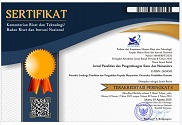Representasi Maskulinitas Hegemonik dalam Iklan
DOI:
https://doi.org/10.23887/jppsh.v2i1.14004Keywords:
masculinity, hegemony, patriarchy, capitalism, consumerismAbstract
This research aims at observing how advertisement define hegemonic masculinity and identifying the models of hegemonic masculinity in Indonesia. This research takes and focuses on Gudang Garam’s 2006–2010-released advertisements for the data. This research applies the analytical method of Fairclough's three-dimension of critical discourse analysis. First, the analysis is conducted by describing the advertisements. Then, the interpretation of the contexts of both the primary and secondary data. Finally, the explanation of the socio-cultural dimension. The results of this research shows that there are transformations on the representation of hegemonic masculinity from macho to metrosexual, which is influenced by capitalism and consumerism. The transformation is only on the physical appearance, not in its essence.Downloads
Published
2018-05-11
Issue
Section
Articles
License
Authors who publish with the Jurnal Penelitian dan Pengembangan Sains dan Humaniora agree to the following terms:
- Authors retain copyright and grant the journal the right of first publication with the work simultaneously licensed under a Creative Commons Attribution License (CC BY-SA 4.0) that allows others to share the work with an acknowledgment of the work's authorship and initial publication in this journal.
- Authors are able to enter into separate, additional contractual arrangements for the non-exclusive distribution of the journal's published version of the work (e.g., post it to an institutional repository or publish it in a book), with an acknowledgment of its initial publication in this journal.
- Authors are permitted and encouraged to post their work online (e.g., in institutional repositories or on their website) prior to and during the submission process, as it can lead to productive exchanges, as well as earlier and greater citation of published work. (See The Effect of Open Access)









